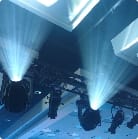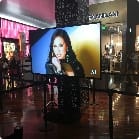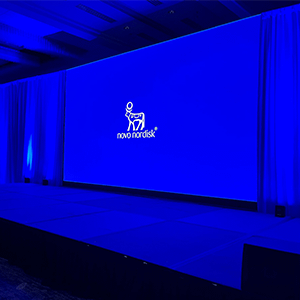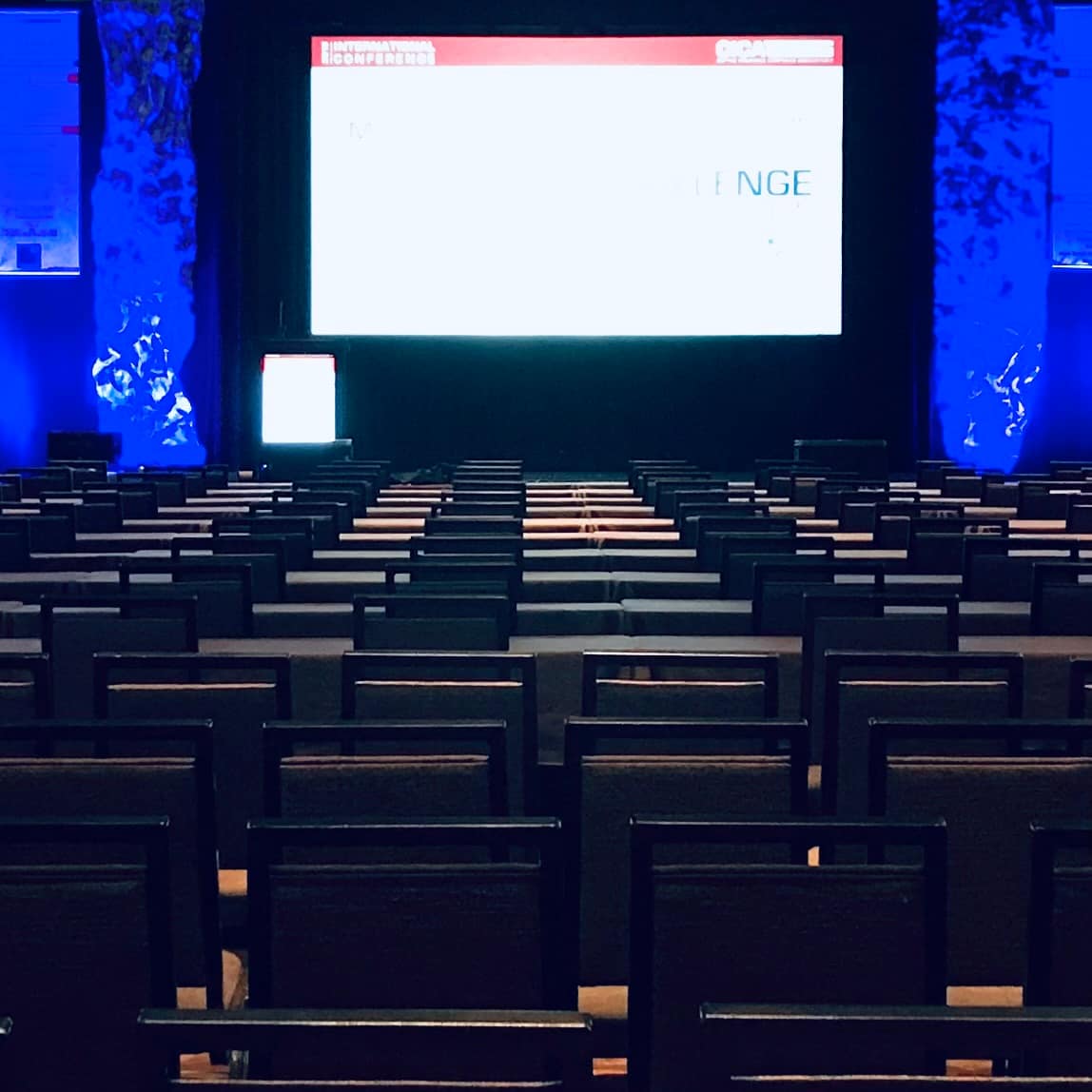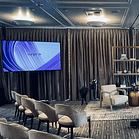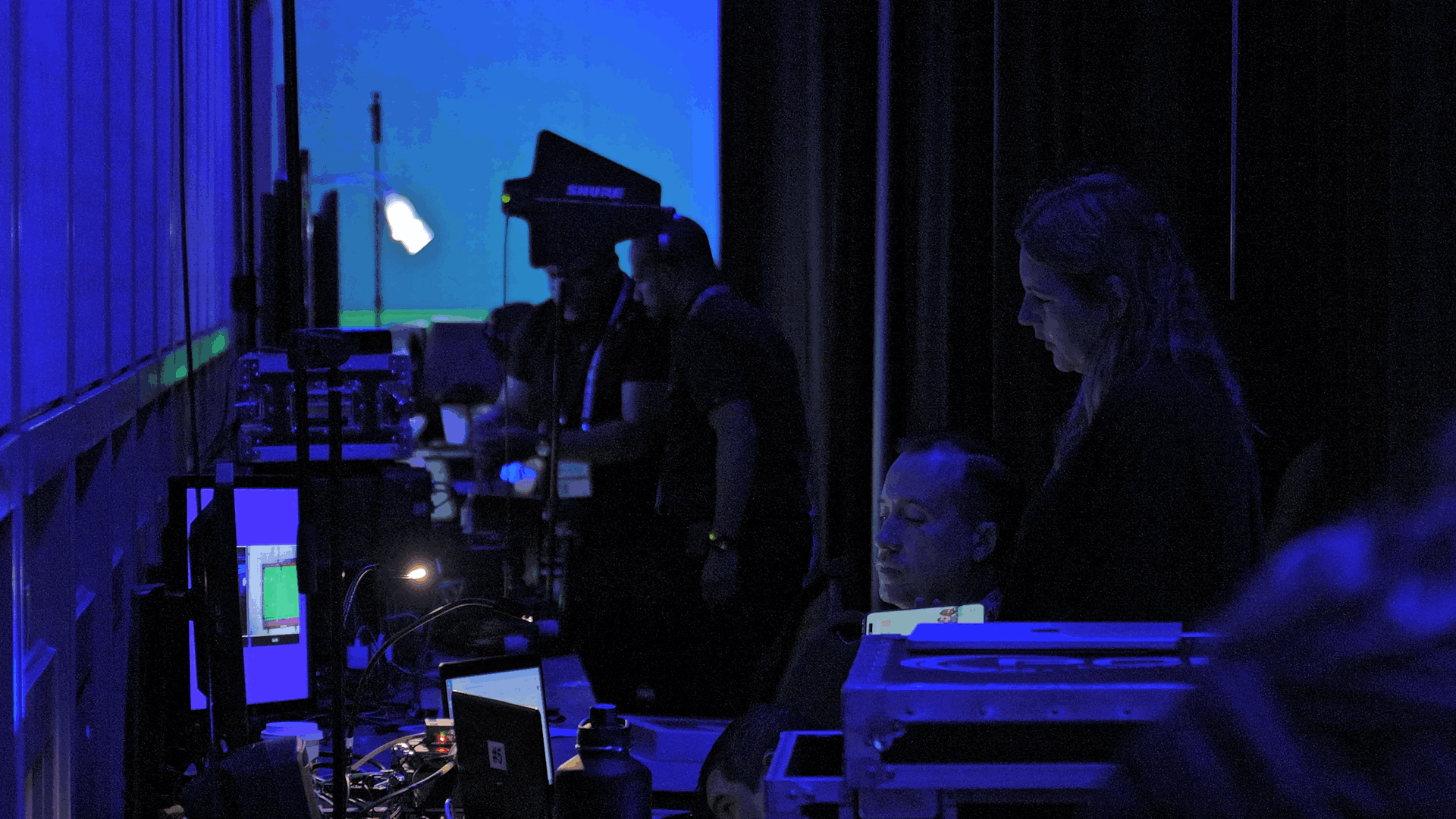When you’ve been in the trenches of corporate event planning long enough, you start to expect that one number will change after the show wraps: the AV total on your final invoice. You open the post‑event email and see a new, higher balance due… Not because you made a mistake, but because the AV production element of the event incurred extra costs during the event. The “real cost” of AV hides in the fine details.
At Visual i Solutions, we’ve seen it all: event professionals start looking for a new AV partner after their event because their final invoice was so much higher than the original proposal. Labor costs, extra gear, and rigging fees, have all ruined budgets. Leading to awkward conversations with the finance department.
So, let’s pull back the curtain on event AV budgeting and uncover how to spot, prevent, and plan for those hidden costs before they derail your next event.
Why Event AV Budgets Rarely Match the Final Invoice
Here’s the uncomfortable truth: most AV budgets aren’t wrong; they’re incomplete.
Base quotes are often built to win business, not to reflect reality. They show the core gear package and labor but skip details like how many hours crew members are going to work per day, freight, or power charges. When the show expands, or when the venue imposes new requirements, costs can balloon.
If you’re working with a third party AV-Vendor (like us), it’s important to connect the sales manager from the venue and your Account Executive early. An experienced AV vendor will know which questions to ask and how to protect or prepare you for the venue costs rigging, labor, power, and the dreaded “AV liaison”.
By starting to uncover this information early on, you will find out sooner that the $150k AV budget you had for your 4-day conference is only going to get you $110k worth of gear, labor to set up and operate, and manage your conference. $40k quickly goes to the venue for rigging, labor, and power costs. Yes, that includes paying for the AV Liaison to watch Netflix on their phone…
Transparency doesn’t mean overcharging; it means accounting for what it really takes to make the show happen.
The Most Common Hidden AV Costs (and How to Spot Them Early)
Rigging & Power Fees: Most venues charge separately for these. Those numbers rarely appear in your AV company’s initial quote (especially if you’re using a 3rd party vendor) Always ask for the venue’s rigging plot and power requirements early.
Labor Overtime & Show Calls: Your show day rarely ends on time. Load-ins go long, rehearsals run late, and post-show strikes can push crew into overtime. Budget for it upfront instead of absorbing it later.
Freight, Drayage, & Storage: Moving AV gear isn’t free at convention centers and some hotels, nor is holding it overnight.
Venue Union Labor or Exclusivity Fees: Some properties (especially in major metros) require the use of in-house or union crews, even if you bring your own gear. This is another detail to uncover early. It’s also helpful to find an experienced AV partner that can help you work out all of these details.
Last-Minute Add-Ons: Extra needs like monitors, adapters, sandbags, or cables often appear during setup. Include a small contingency for on-site requests.
Cancellation or Change Fees: Pushing your show by even one day can trigger warehouse or trucking penalties. Read the fine print.
The Anatomy of a Transparent AV Estimate
A transparent AV quote isn’t the cheapest—it’s the clearest.
It should spell out every major cost category so you understand exactly where your money is going.
Professional and transparent quotes include:
- Equipment: Lighting, audio, video, staging, LED, projection, power distribution.
- Labor: Setup, rehearsals, show calls, strike
- Trucking & Freight: Round-trip costs and any handling fees.
- Pre-Production: CAD drawings, virtual walkthroughs, or content formatting.
- Venue-Specific Costs: Rigging, power drops, permits.
At Visual i, we itemize every piece so planners can make informed decisions (everybody ends up happier this way)
Why Labor Is the Silent Budget Killer
Labor is the heartbeat of your event but also, the line item that shocks most planners.
Unlike equipment, crew costs fluctuate with show schedules, rehearsal lengths, and venue restrictions. A 2-day conference might need 4 days of labor once setup and strike are included. Multiply that by a 12-person crew and you see how fast it scales.
Crew roles typically include:
Project Manager: Oversees all project logistics, budgets, timelines, and communication between client, venue, and technical teams. On-site, they often act as the liaison between the client and the Production Manager or Technical Director
Production Manager: Manages on-site production elements, coordinating departments to ensure load-in, show, and strike run smoothly.
Technical Director: Translates creative vision into technical reality, ensuring equipment and crew align with show design.
A1 Audio Engineer: Head Audio Engineer responsible for mixing and setting up all live sound during an event.
A2 Audio Technician: Supports the A1 by handingling microphones, miking presenters, and backstage audio coordination. They assist the A1 during the set up of the PA.
E2 Engineer: Controls the video switching and routing via the E2 Screen Manager, managing multi-screen content and transitions. This position is typically found for larger General Sessions.
LED Engineer: Builds, calibrates, and maintains LED walls; ensures signal integrity and samless visula output.
Projectionist: Sets up, focuses, alisngs and, blends projectors. They also oversee the building of the projector screens.
Graphics Operator: Runs all presentation and show graphics, managing playback and on-screen cues.
V1 Video Engineer: Handles video distribuiton, cabling, and signal flow across all display and recording systems.
L1 Lighting/Programming Technician : Designs, programs, and operates lighting cues to enhance stage aesthetics, transitions and ensure there is enough light on-stage for recordings/IMAG.
Camera Operator: Operatres cameras for IMAG, recording, or streaming, following cues from the Technical Director.
PTZ Camera Operator: Manages remote-controled camera, framing and adjusting shots live during sessions.
Lead AV Technician: Overseees general AV crew, ensuring technical elements function as planned. These technicians can execute small events on their own, operating both audio and video elements.
Breakout Floater: Moves between breakout rooms to ensure smooth sessions starts, trouble shoots, assists presenters, and manages quick AV fixes between breakout rooms.
General AV Technician: General AV Technicians (GAV) are responsible for setup, cabling, operator, and strike across all departments.
How to Avoid Budget Creep
Similar to any other project, budget creep comes from a lack of communication with stakeholders and changes. Even the small ones compound over time.
Here are some winning strategies that we’ve found that reduce budget creep, specifically for AV production:
- Lock in your run of show (ROS) early. A finalized schedule reduces unknowns, assists in avoiding meal penalties, and overtime hours won’t be a surprise.
- Communicate openly. Share your budget ceiling; attendee count, venue, ballroom, and a vision for the event, if you have one of course.
- Collaborate visually. Pre-production walkthroughs and CADs prevent last-minute changes.
- Co-build your quote. For larger conferences Visual i’s collaborative Zoom sessions allow planners to edit quotes live, ensuring expectations match reality.
What Transparency looks like in Practice
We recently bid on a project that involved a flown lighting rig and LED video wall. Based on our experience working at that specific venue, we asked prior to coming up with a set design for the general session if the budget included the power and rigging costs from the venue.
Unaware of those additional costs, the client bidding on the show was very thankful we asked. In our bid we included the cost of labor and gear, but also an estimate of what the venue would charge for rigging and power for the set (oh, and the AV liason…)
Building a Smarter AV Budget for Your Next Event
Clear communication is the foundation of a smarter, clearer, and more efficient AV budget. Before diving into numbers, planners should take time to communicate event needs in detail; room layouts, session schedules, creative goals, and technical priorities. When everyone starts from the same understanding, quotes become more accurate, events are more successful, and post‑event surprises disappear.
Quote Review: What to Look For
Start with a clear framework:
- Venue power & rigging
- Labor (by phase: setup, show, strike)
- Equipment rental
- Freight/trucking
- Miscellaneous supplies
Then, add a 10–15% contingency for venue or schedule changes. When reviewing quotes, make sure you’re comparing apples‑to‑apples: identical gear specs, labor assumptions, and venue requirements.
Final Thoughts: The Real Cost of AV Is the Cost of Communication
Hidden fees thrive in silence.
Open and frequent communication + Early discussions = Staying on Budget
The right AV partner doesn’t just deliver gear—they deliver guidance. They act as your co-pilot, ensuring every dollar moves the show forward.
Ready for a transparent, surprise-free quote?
Visual i Solutions delivers Extraordinary Events. Excellent Service.


